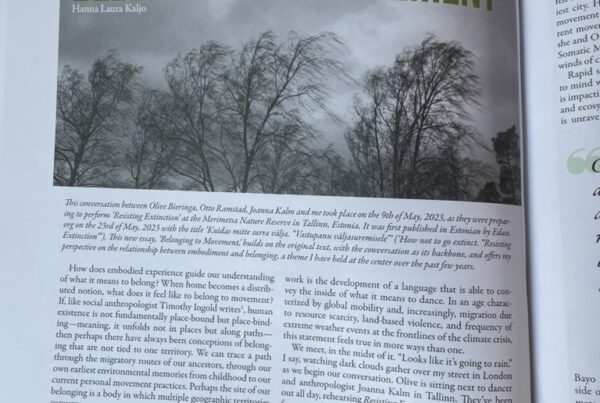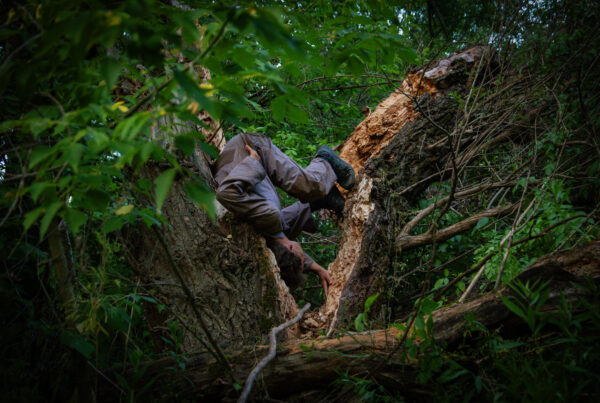VISITING OLIVE BIERINGA’S CLASS “IMPROVISATIONAL COMPOSITION
Author: Sabina Holzer
Source: CORPUS
Date: July 31, 2008
“Phenomenology establishes a relationship between the subject and the objective world through the body. Most of the time the bodily movements are restricted to daily actions: at other times unusual patterns of movements serve no longer the primary conservation of life but the movements transform into dance. In both cases the body meets the surrounding space in its ultimate desire to act upon the environment. Proprioception plays a crucial role in daily movements as well as in improvisation practice. Proprioception is all the information about the movement and position of body parts relative to each other deriving from the mechanical receptors in muscles, joints, vision and the inner ear.” (Cole & Paillard, 1995). [1]
The group is sitting in a circle refreshing their memory and experience of the day before.
During the week they were exploring and playing with senses, sensation and feeling in relation to the different systems of body-mind centring and connecting these experiences in group improvisations, duos and solos.
The class starts with everybody saying their names again, one after the other. Then the people are asked to say the name from their bones, then from a specific bone. The voices change.
The participants are then asked to pair up. They start working with their eyes closed. The score is given: “Play with stillness and movement in relation to each other. Move together or be still together, or alternate. Play with the timing. You can give space or interrupt each other. Witness how you tune your senses to feel the movement or stillness of your partner.”
An attentive dialogue starts with seemingly incoherent movements. The body enjoys talking without “language”, without a comprehensible vocabulary or grammar provided by a certain technique or style. Slowly, with time, the act of listening becomes traceable, the reaching out of the senses tangible. The pairs are relating to each other through a unique logic, in a very specific, yet indefinable way. Olive Bieringa supports the space by sitting aside, witnessing and offering advice every once in a while.
After about fifteen minutes, the dancers are invited to also play with opening and closing their eyes. The atmosphere changes slightly, sharper shifts of rhythms or more direct touching occur, but the awareness of listening, which also generates a special quality of movement, is dominating. As if listening to the partner encouraged listening to oneself.
The pairs are asked to build a structure together, which they will then be performing for each other. The structure should include: eyes open, eyes closed, movement and stillness, either simultaneous or alternating. “Build something that is interesting for you.” says Olive Bieringa. The movements and the duration of sequences within the structure are improvised.
Little stories are generated, told by the timing, distance or closeness to each other.
The excitement of performing for each other makes the articulations of movement more pronounced, sensations transform into emotions. It is obviously more difficult to work with stillness and to let the space move; to trust that the relationship is constituted by the shared space and structure without having to add to it, whilst being observed by a group.
Another score is introduced: one person performs an approximately one-minute-long solo and anybody who wants to can “replay” the material of the solo. This does not mean trying to copy it, but to engage in what seems to be the essence for those who are watching. The “replay” can be executed by one or more persons at the same time, but not by the one who performed the initial material.
At least four or five people respond to the solos. Variations of similar, but not the same responses are created. The personal material, taken on by others and put into space together spontaneously transforms into a funny, weird, absurd and shared dance of lightness.
This score is extended: within the “replay” the people who are watching can interact with the improvisation by saying: “hold”, “repeat”, “eyes closed”. When saying “replace”, the improvisers stop and the person is replacing one of the dancers.
The possibility to interfere is used extensively.
The tools and scores that Bieringa provides are simple and effective.
Watching and performing continuously change and a diversity of backgrounds is shared in a playful way.


